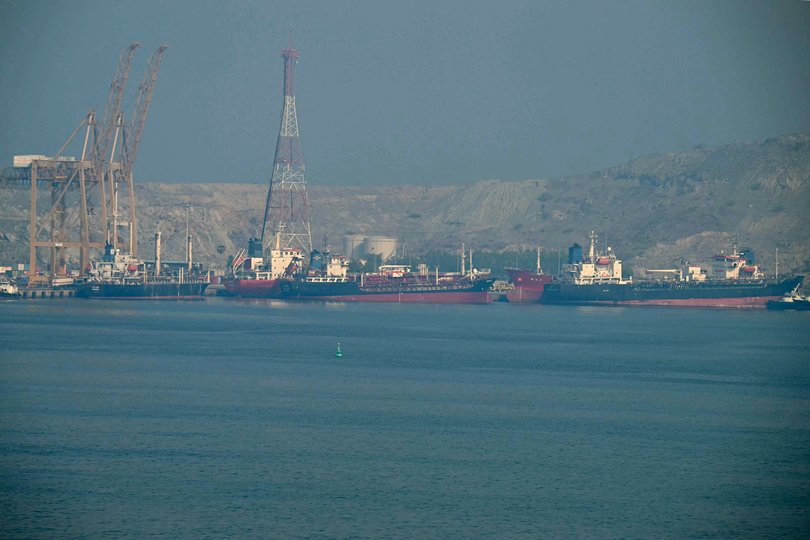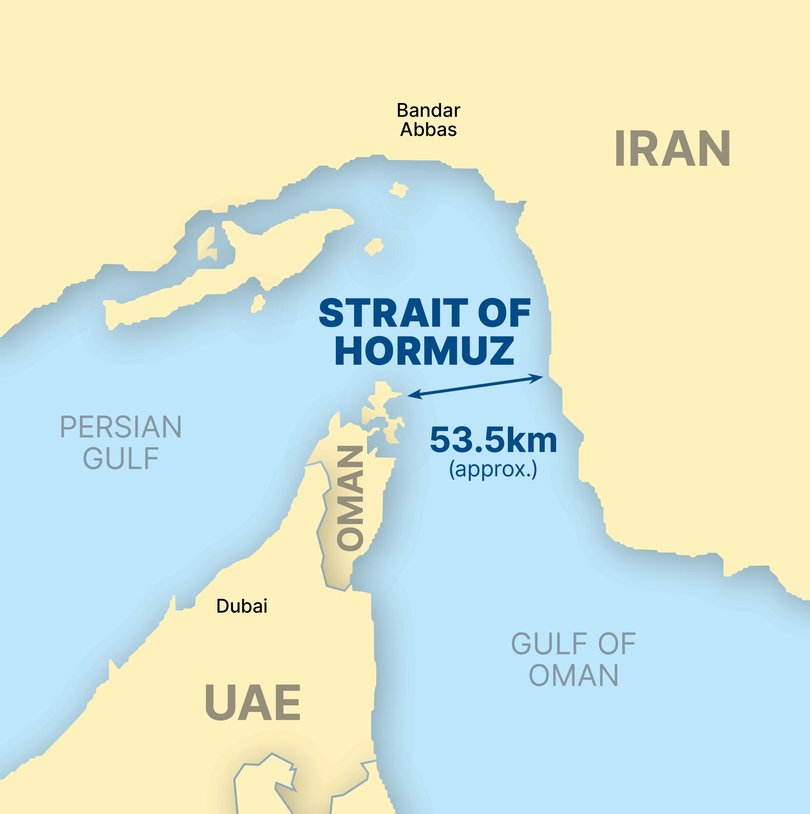JACKSON HEWETT: Oil’s good on the energy front as price plummets after Donald Trump’s ceasefire call
Iran appears to have taken the least worst option in retaliating to the US bombing its nuclear sites, opting for a face-saving de minimus missile sortie at a US airbase in Qatar.
They even gave a warning.
It appears Iran’s goal is to provide an off-ramp for an end to the conflict, which the market has determined as game over for any threat to oil supply.
Sign up to The Nightly's newsletters.
Get the first look at the digital newspaper, curated daily stories and breaking headlines delivered to your inbox.
By continuing you agree to our Terms and Privacy Policy.The expectation there will be an end to hostilities has sent the slightly elevated oil price plunging from $US75.14 to $US66.30 a barrel, now 12 per cent lower than its high in the midst of the joint bombing raids.
Oil is cheaper than it has been for most of the year, with the exception of the last few months when Donald Trump’s tariffs set the global economy into slow growth mode.
Australia imports 90 per cent of its oil requirements, more than $54 billion last year, making it very vulnerable to price volatility.
The NRMA’s Peter Khoury said motorists are still likely to see a bump in oil prices over the next week or so to as much as $2 per litre, as the recent spike has occurred just at the tail end of the current cyclical low in petrol prices.
“For city drivers its a good time to buy now because we expect those prices will start to go up very soon,” he said.
Treasurer Jim Chalmers said he had written to the chair of the Australian Consumer and Competition Commission to keep a close watch on any attempts to gouge consumers.
“We don’t want to see this volatility in global oil prices lead to more than justifiable changes in the price that Australian motorists pay at the bowser,” Dr Chalmers said.

In some ways the bigger surprise from this whole affair is how little the oil price rose throughout this conflict.
In years gone by, conflict in oil producing regions has resulted in a growth sapping spike in energy prices.
In the 1970s, when OPEC put an embargo on oil in retaliation to Western support for Israel in the Yom Kippur war, oil spiked fourfold in today’s dollars.
During the Iranian revolution in 1979 it tripled in price, in the first Gulf War it more than doubled.
The second Gulf War was short lived enough to have a relatively muted impact and from the late 2000s the largest spike in oil came as a result of China’s soaring demand.
The most recent spike was during Russia’s invasion of Ukraine, when oil leapt from a low of $US20 a barrel during the COVID shutdown to $US120 a barrel in 2022, coinciding with the world opening up.
That was as much a gas story, with prices soaring as European demand could no longer be met with Russian supply.
Oil shocks are at their most influential when linked to global demand, which is why analysts believe this spike has been so limited.
Demand for oil has fallen on two fronts, first as a result of the tariff induced slowdown but also due to changing nature of global oil markets.
Compared to previous shocks, the US has gone from a net oil importer to an exporter, thanks to its massive fracking operations that began in response to the oil spike of the 2000s.
Over the last six years, according to the US Energy Information Administration, the United States was the number on producer of crude oil in the world, accounting for 13 million barrels per day in 2023, compared to Saudi Arabia’s 10 million barrels.
In previous periods declining demand would be met by a pullback in production in OPEC countries, keeping the oil price high, but the International Energy Agency expects continued high production by non-OPEC countries, led by the US and Latin America to push supply capacity to unprecedented levels by 2023 “a staggering 8 million barrels per day above projected global demand.”
Demand is also the way down, led by China.
While still the largest consumer, its formerly insatiable appetite for oil is now on the wane, with the country’s huge fleet of electric vehicles meaning its consumption of petroleum has peaked and is now in decline.
The way the world consumes oil is also changing, with oil intensity - oil consumed per unit of economic output (such as GDP), declining in an almost 45 degree straight line since 1984. According to Columbia University’s Center on Global Energy Policy, in 1980 the world used 0.8 of a barrel of energy for $US1000 of output, which had fallen to 0.4 barrels per $US1000 by 2019.
Oil eases but energy savings unlikely
Unfortunately for Australia, the downward trajectory in oil prices may not help when it comes to energy costs here in the short term.
Gas and oil prices have been decoupling since the Russia-Ukraine energy crisis, and the tightness in domestic gas supply means any further decline “will take time to flow through” to Australia, according to Josh Runciman, lead gas analyst at the Institute For Energy Economics And Financial Analysis.
The IEEFA forecasts Australia will continue to face worsening supply through to 2029, even with east coast gas production increasing over the past decade.
Part of that is to do with a lack of investment to offset declining gas production in the Gippsland Basin amid regulatory barriers, and the preference for Queensland based producers to export output rather than direct it to the local market.
And while the share of gas in our electricity grid is falling, it remains a vital back up to renewables and diesel plants are not a viable substitution.
“Diesel is the most expensive fuel to use for peaking plants, with gas a distant second,” Mr Runciman said. “Oil would need to fall quite a bit to push gas out of the mix.”
There might also be a sting in the tail from declining oil prices as the oil glut increases. Despite Mr Trump’s exhortations to “drill baby drill” US shale oil producers are cutting back their wells. According to the Wall Street Journal, active oil rigs in the Permian Basin - the US’s largest oil field - had fallen to the lowest level since the end of 2021. The WSJ reported that even the most cost-effective producer needed prices above $US65 a barrel to be profitable.
Natural gas is a byproduct of many US shale wells, and fewer wells means less gas coming onto the market, meaning the world might get to a point where lower oil prices means lower global gas supply.
Fortunately, this may also coincide with an anticipated oversupply of natural gas globally from 2030 onwards.

A positive in the near term
If Iran and Israel hold to the ceasefire and there are no strikes to oil infrastructure, markets will refocus their attention on the impact of tariffs.
For now, the news appears to be relatively positive, with ratings agency S&P Global today upgrading its forecast for global growth.
Despite the tariff-induced slowdown in exports, economists Louis Kuijs and Vishrut Rana found Asian nations had proved resilient thus far, and upgraded their forecast for China’s growth from 3.5 per cent to 4.3 per cent for 2025.
Trump may be emboldened by what so far looks like an unrivalled success in Iran to push China harder on tariffs, or he might take the foreign policy win and run with a much less extreme tariff program. Only he knows.
He might also be closer to getting the interest rate cut he so desperately wants, with a second member of the US Federal Reserve (and the potential next chair), saying he was now of the view rates could be cut.
With the fire almost out in the Middle East, look to the Middle Kingdom for next clue in where the global economy is heading.

